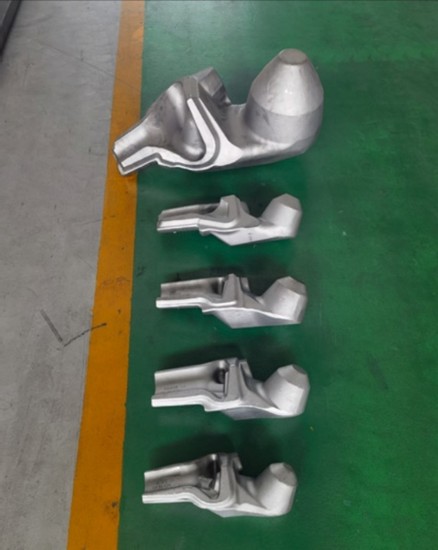1. Technical Requirements:
1.1 Chemical Composition: The chemical composition should comply with the client-approved material specifications.
1.2 Low Magnification: The acid-etched sample of the steel bar’s cross-section should not show visible defects such as shrinkage cavities, bubbles, cracks, slag inclusions, white spots, or delamination. According to GB/T1979-2001, the acceptance level should meet the relevant requirements.
1.3 Non-metallic Inclusions: According to GB/T10561-2005, Method A, the acceptance level should meet the relevant requirements.
1.4 Austenite Grain Size: According to GB/T6394—2017, the acceptance level should be ≥6.
1.5 Band Structure: According to GB/T13299—1991, the acceptance level should be ≤3.
1.6 Mechanical Properties: After rolling, a sample should be taken at the midpoint of the steel bar’s radius to test the longitudinal mechanical properties and should comply with the relevant standards.
- 2. Process Route Selection:
Based on product technical requirements, steel type characteristics, and process technology equipment, the trial production process route should be chosen: Electric Arc Furnace Refining + External Refining + Vacuum Degassing + Vertical Continuous Casting + Annealing of Continuous Cast Billets → Physical and Chemical Testing → Heating → Rolling → Annealing → Skinning → Non-destructive Testing → Cutting → Physical and Chemical Testing → Qualified for Storage.
3. Product Inspection:
3.1 Continuous Casting Ingot C Segregation: To understand the quality of the continuous casting billet, samples should be taken after annealing. Starting from the edges of the sample, along the diameter direction, 13 points are drilled, and the C element content is analyzed using an infrared carbon-sulfur analyzer to draw a segregation curve. 3.2 Low Magnification: A 20mm thick low magnification sample should be taken from any furnace batch of rolled steel bars. The low magnification structure should meet the relevant requirements.
Post time: Dec-20-2024





